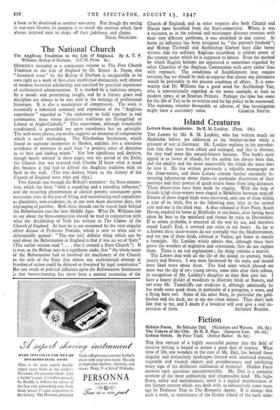Island Creatures
Letters from Skokholm. By R. M. Lockley. (Dent. 15s.) THE Letters by Mr. R. M. Lockley, who has written .much on Skokholm before, are addressed to his brother-in-law while a prisoner of war in Germany. Mr. Lockley explains in his introduc- tion that they have been edited and enlarged, and this is obvious, for they read more like natural-history lectures. The book's main appeal is to lovers of islands, for the author has always been that, and the smaller and the more inaccessible the island the more does he love it. He has written previously a valuable monograph on the shear-waters, and these Letters contain further extremely in- teresting information about them—in particular discoveries of their journeys and their powers of quick return home from long distances. These discoveries have been made by ringing. With the help of friends 2,746 shear-waters were ringed at Skokholm between 1935-38. Sixteen of these ringed birds were recovered, only one of them within a year of its birth, five in the following year, nine in the second year and one in the third year. A skua released at Start Point, South Devon, reached its home ax Skokholm in ten hours, after having been taken by boat to the mainland and thence by train to Devonshire. If as seems probable, it returned all the way by sea, and therefore round Land's End, it covered 200 miles in ten hours. So far as is known these shear-waters do not normally visit the Mediterranean, and yet one of these birds, released at Venice, got home in exactly a fortnight. Mr. Lockley wisely admits that, although these facts prove the wonders of migration and orientation, they do not explain them. There is no real explanation ; the thing remains a marvel.
The Letters deal with all the life of the island, its animals, birds, insects and flowers. I was most fascinated by the seals, and should have liked more about them. The bird story which pleased me most was the dip of two young ravens, some time after their release, in recognition of Mr. Lockley's daughter as they flew past her. I have a hearty dislike of woodcuts to illustrate birds or flowers, and not even Mr. Tunnicliffe can eradicate it, although admittedly he has made some good shots, in particular of a peregrine, a wren, and a flying barn owl. Some of his other fliers, in particular the gold- finches and the duck, are to my eye clean misses. They don't look like that to me, and I doubt if a woodcut will ever give a real im-


































 Previous page
Previous page